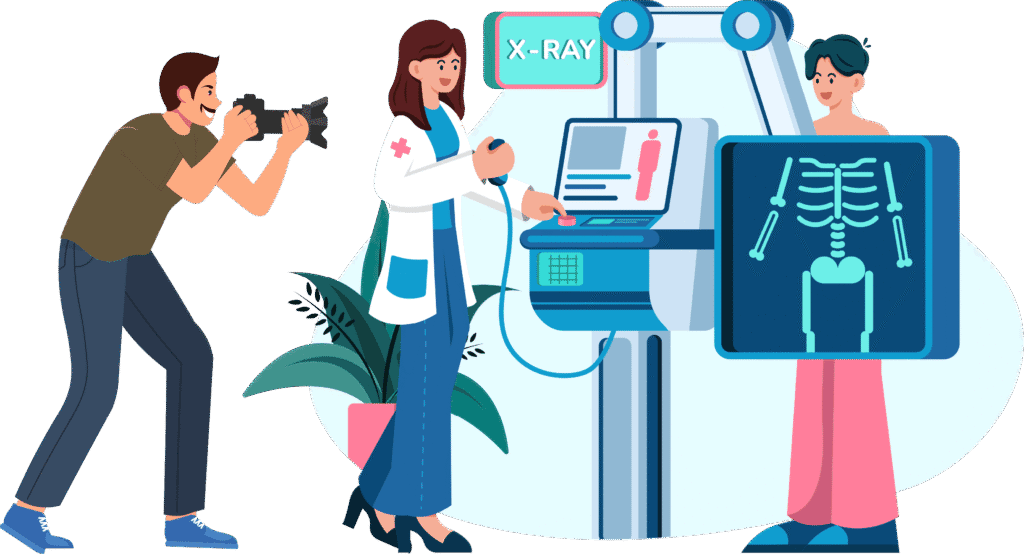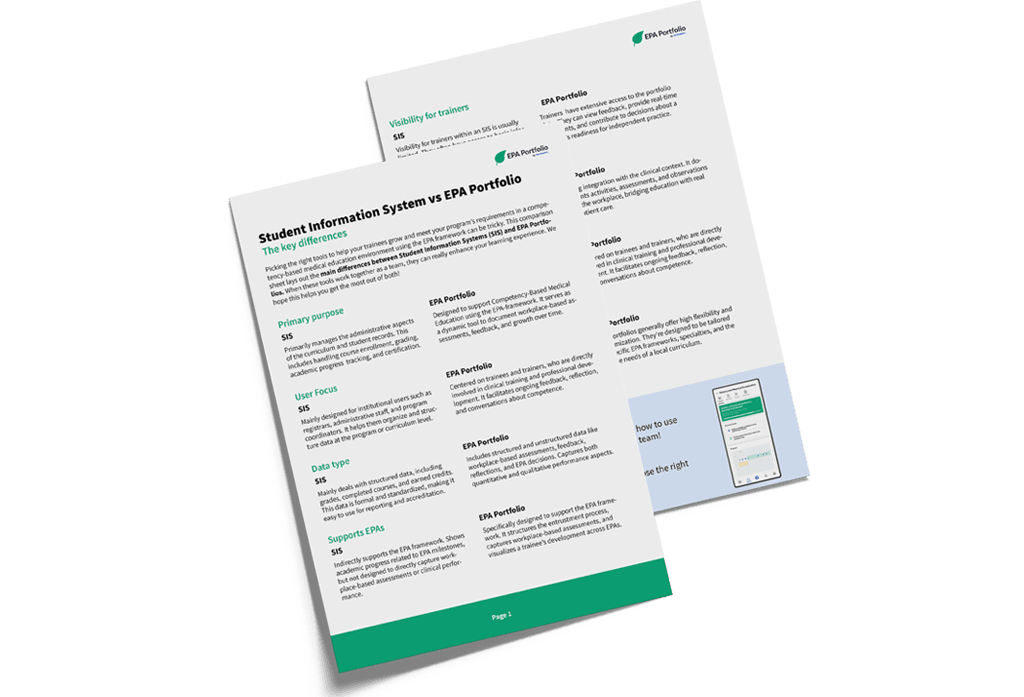When working with Entrustable Professional Activities (EPAs), using the right technology can make a big difference in how smoothly and effectively things run. Student information systems (SIS) and digital portfolios are two key digital tools. Each play an important role, and together they help improve both the admin side and the learning experience. Understanding how these systems work together is crucial for building medical education programs that are flexible, practical, and focused on real competencies.
SIS: capturing the bigger picture of a learners journey
Student Information Systems are mainly about managing the administrative side of education. In medical schools, they take care of things like course registration, timetables, grades, exams, and keeping track of who’s meeting curriculum requirements. These systems are mostly managed by the school’s central office and focus on the formal side of education.
In short, SIS platforms make sure trainees are enrolled in the right courses, stay on track for graduation, and that all the necessary academic records are available and up to date. They provide a structured, big-picture view of a student’s academic path. But while they’re great at handling formal education data, they’re not built to track what’s happening in clinical practice or how students grow in real-life settings. That’s where digital portfolios come in.
Digital portfolios: capturing a series of continuous snapshots
Digital portfolios serve a different but equally important purpose. They focus on the learner and are all about collecting rich, qualitative information over time, like narrative feedback, workplace-based assessments (WBAs), reflections, and progress in clinical skills.
Portfolios help document EPAs across different locations and clinical settings, creating continuous snapshots that together paint a detailed picture of how a learner is developing over time. They’re also designed to be collaborative. Since learners train in many different environments, ranging from big hospitals to smaller clinics, portfolios give all supervisors a shared space to leave feedback, assessments, and decisions about entrustment. This flexibility is a must-have for EPA-based training, where it’s all about what learners actually do in real-world situations.


How SIS and Portfolios are a winning team
SIS and digital portfolios do different things, but they’re not in competition. In fact, they work best when they’re used together. The SIS keeps track of whether students are meeting academic requirements, while the portfolio shows how those students are applying what they’ve learned in clinical practice and whether they’re ready to work more independently.
In EPA-based programs, where progression is determined by competence rather than time, the integration of both systems becomes even more crucial. A student may fulfill the formal requirements of a rotation (tracked in the SIS), but whether they are entrusted with independent practice (recorded in the portfolio) depends on real-time performance data gathered in clinical settings.
Take this example: the SIS shows that a student has finished their internal medicine rotation on paper. But in their portfolio, several educators have noted that the student still needs support when handling more complex patient cases. Thanks to that extra layer of insight, the program can offer more hands-on experience or targeted coaching before deciding they’re ready to take on those responsibilities alone. Without both systems, that kind of important detail could easily be missed.
And that kind of insight really matters: not just for the learner, but also for educators and program directors. When both systems are connected, it’s easier to spot early on if someone needs a bit of extra help, or if they’re ready to take on more responsibility. It also makes decisions about progress feel more fair and grounded. Instead of just going by checklists or gut feeling, educators get a fuller picture that includes both the formal milestones and what’s actually happening in the clinic.
Things to keep in mind
Of course, making SIS and portfolios work well together isn’t without its challenges. Technical integration, privacy rules, and getting faculty on board are all common hurdles. Organisations need to make sure that both systems can exchange data securely and reliably. And faculty, especially clinical educators, need the right training and support to use portfolios effectively, particularly when it comes to EPA assessments.
That said, the benefits of using both systems are clear. When set up well, they provide a well-rounded, in-depth picture of learner progress. This makes it easier to personalize education, give better feedback, and make informed decisions about whether a learner is ready for more responsibility.
Final thoughts
As we are sure you have concluded by now is that in EPA-based medical education, SIS and digital portfolios go hand in hand. One handles the structured, formal and mostly administrative side of learning; the other captures how students are performing in the real world. Together, they support a more modern, competency-based approach to training. One that values not just ticking boxes, but developing confident, capable, and reflective medical professionals. As medical education keeps evolving, making the most of both systems will be key.
Download our comparison sheet
We hope this article has given you valuable insights into how to make the most of your SIS and portfolio to improve the learning experience in your medical program. If you’re still unsure whether you’re using both tools to their full potential, we’ve put together a helpful PDF comparison sheet. This sheet will guide you through key points to ensure you’re maximizing the impact of both systems, making your medical education programs more flexible, practical, and competency-focused. Simply fill in the form below, and we’ll send it directly to your inbox!
For all other articles and webinars, visit our EPA learning hub!


